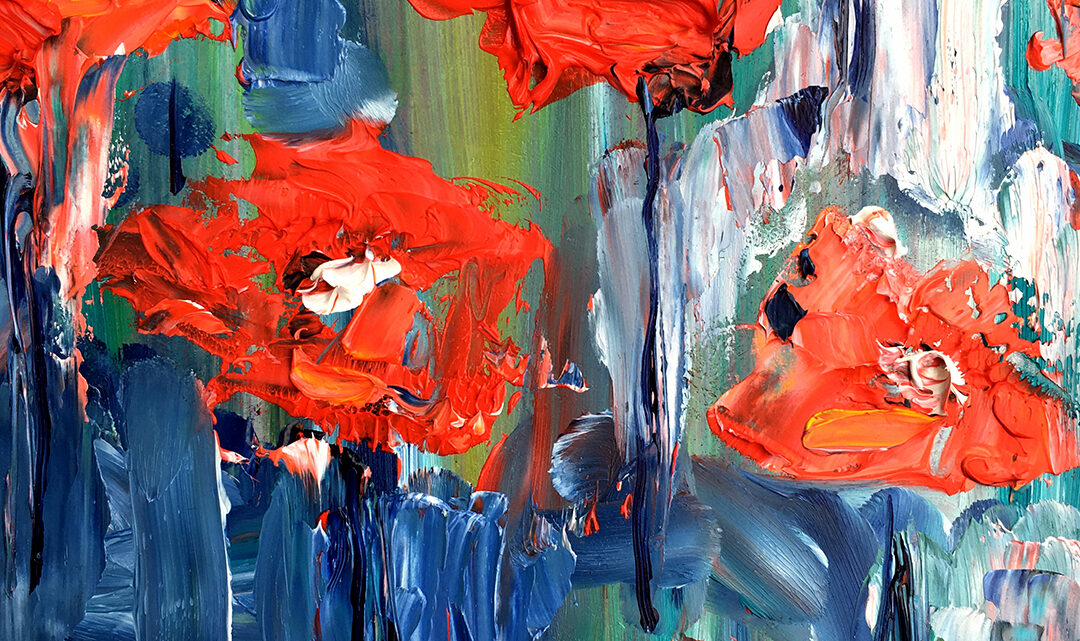
Petals of Passion: A Journey Through the Artistry of Poppy Painting
November 29, 2023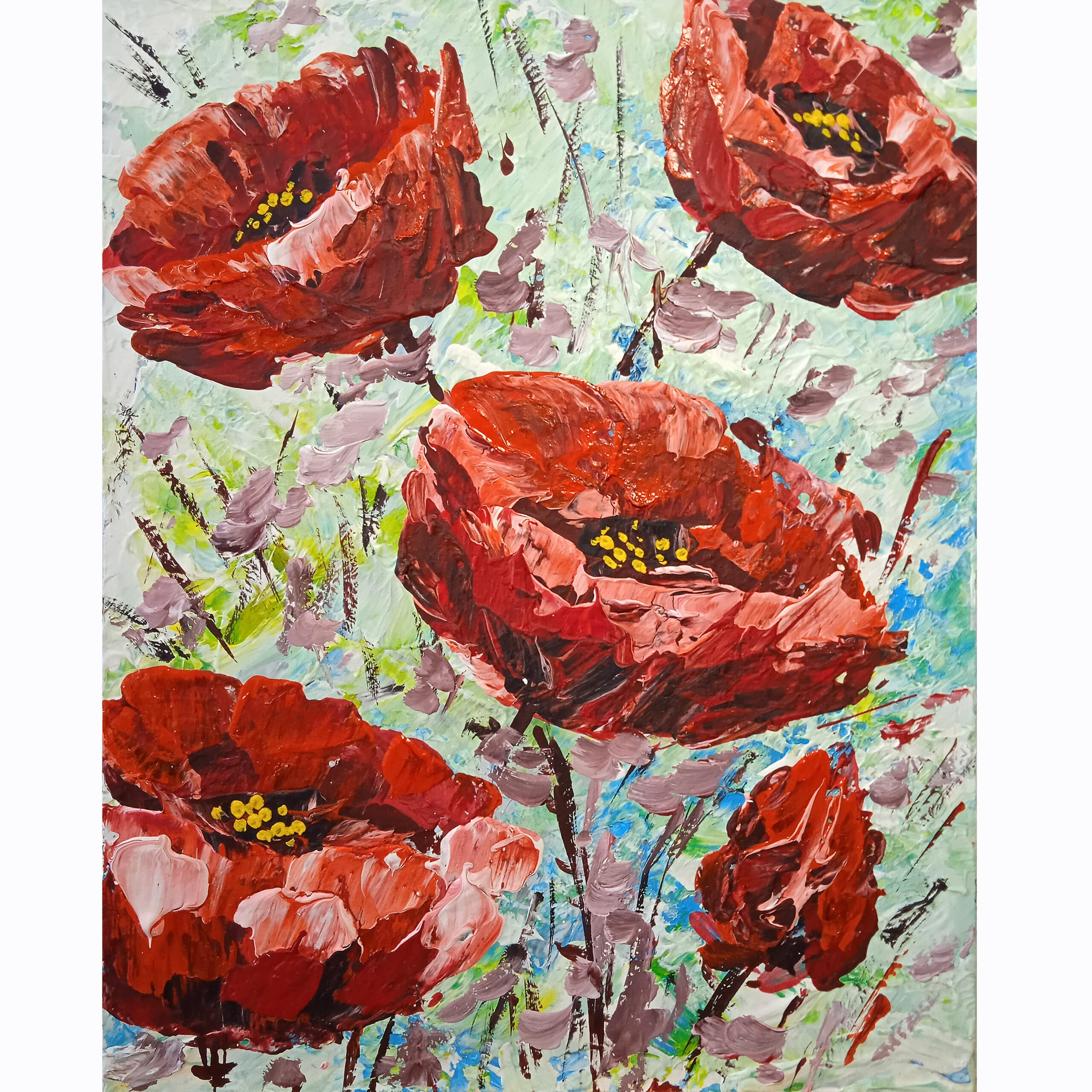
Poppy painting is a captivating form of art that draws the attention of artists and art enthusiasts alike with its beauty and symbolic significance. Poppies, with their delicate petals and vibrant colors, have become not only a source of inspiration for many artists but also a symbol of remembrance, peace, and resilience.
In this article, we will delve into the world of poppy painting, exploring the history of this unique artistic expression, analyzing the techniques and styles employed in creating these works, and examining the influence of nature on this mesmerizing art form. We will also explore the works of renowned artists who have dedicated their creativity to depicting poppies, providing practical tips for those who wish to try their hand at creating their own poppy paintings.
Welcome to the captivating realm of poppy painting, where each canvas is a unique embodiment of beauty and harmony.
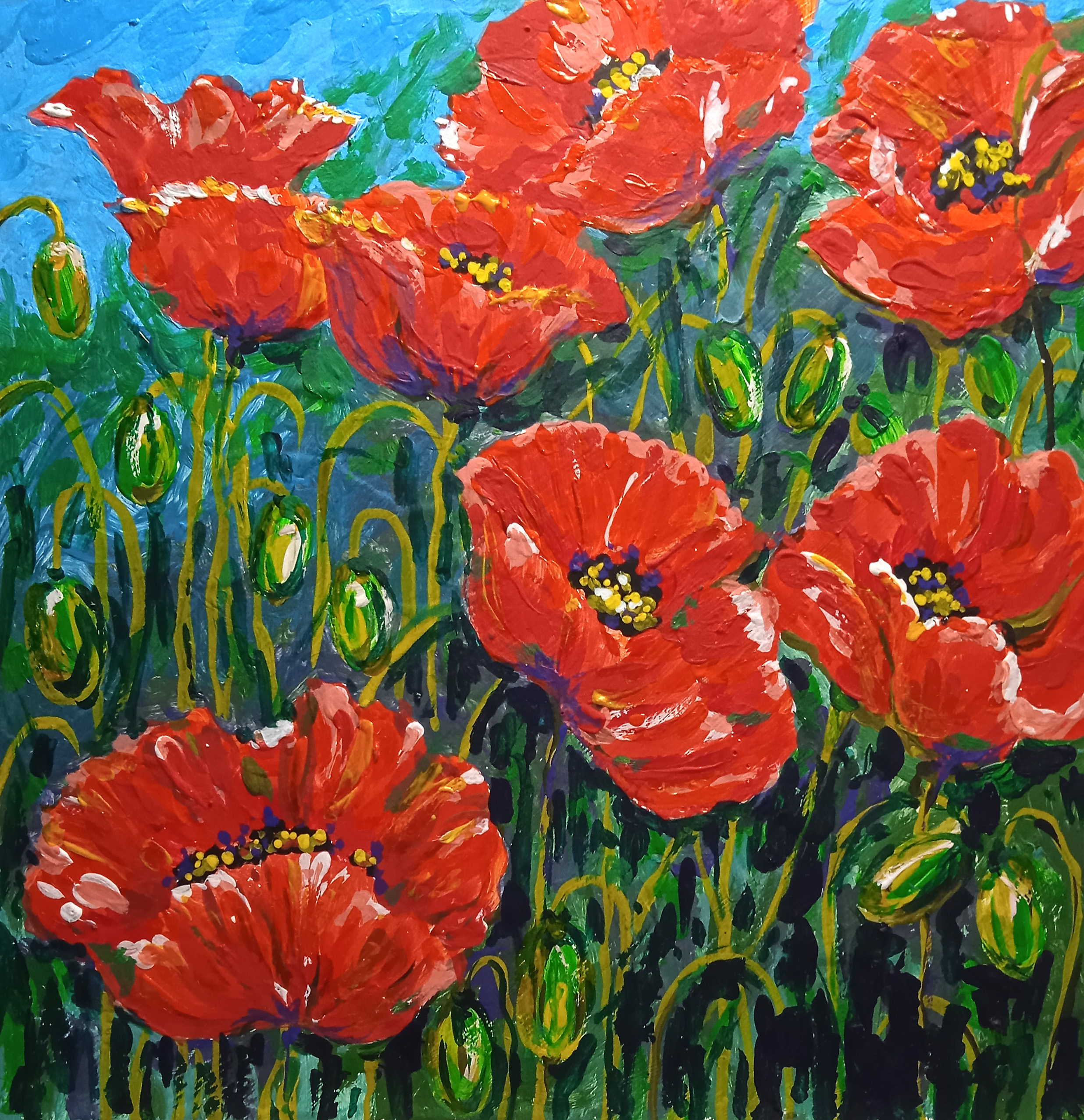
History and Symbolism of Poppies in Art
The history of incorporating poppies into art is rich and diverse, with these vibrant blooms holding a special place in artistic expression across cultures and time periods. Poppies have been featured in art for centuries, their symbolic significance evolving and adapting to various contexts.
The use of poppies in art can be traced back to ancient civilizations, where they often symbolized both the ephemeral nature of life and the cycle of rebirth. In more recent history, the poppy gained prominence as a symbol of remembrance, particularly in the aftermath of World War I, inspired by the poignant war poem “In Flanders Fields” by John McCrae.
Artists throughout history have been captivated by the visual allure of poppies, incorporating them into paintings to convey a range of emotions and themes. From the delicate brushstrokes of the Impressionists to the bold, symbolic renderings of contemporary artists, poppies have been a versatile muse for creative minds.
The symbolism of poppies in art extends beyond their aesthetic appeal. Poppies are often associated with concepts such as sleep, death, and rebirth, making them a powerful symbol in both religious and secular contexts. Whether depicted in classical oil paintings or modern abstract compositions, poppies continue to inspire artists to explore themes of life, loss, and resilience.
In this section, we will delve into the historical roots of poppy symbolism in art, tracing its journey from ancient civilizations to the present day. We will explore how the meaning of poppies has evolved and examine key artworks that have contributed to shaping the enduring symbolism of these captivating flowers in the world of art.
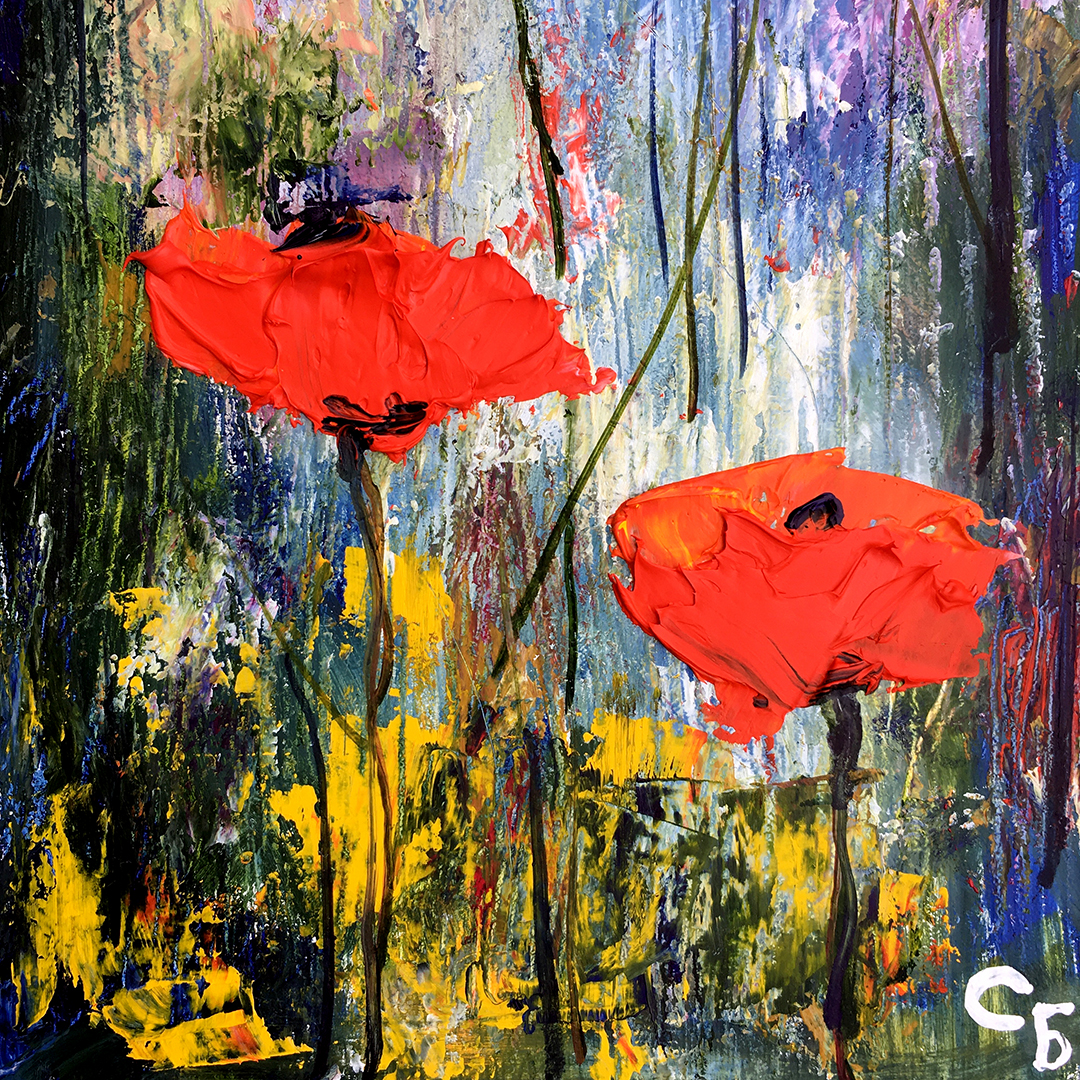
Techniques and Styles in Poppy Painting
The world of poppy painting encompasses a diverse range of techniques and styles, each contributing to the unique allure of these floral masterpieces. Artists employ various methods to capture the essence of poppies, from the subtle nuances of color to the intricate details of their delicate petals.
1. Impressionism:
- Pioneered by artists like Claude Monet, the Impressionist movement brought a fresh perspective to poppy painting. Characterized by loose brushstrokes and an emphasis on capturing the play of light, Impressionist poppy paintings often evoke a sense of movement and immediacy.
2. Realism:
- Some artists opt for a more realistic approach, meticulously portraying every detail of poppy blooms. Realist poppy paintings showcase the artist’s technical skill, allowing viewers to almost feel the texture of the petals and experience the vibrant colors in an incredibly lifelike manner.
3. Abstract Expressionism:
- In the realm of abstract poppy painting, artists use bold strokes, unconventional color palettes, and abstract forms to convey the emotional impact of the flowers. This style allows for a more interpretative and subjective representation of poppies, inviting viewers to engage with the artwork on a visceral level.
4. Watercolor Techniques:
- Watercolor is a favored medium for poppy painting, offering a translucent quality that beautifully captures the delicacy of the flowers. Artists can experiment with washes, layering, and wet-on-wet techniques to achieve a soft, ethereal effect reminiscent of the fleeting nature of poppies.
5. Mixed Media:
- Contemporary artists often push the boundaries of traditional poppy painting by incorporating mixed media. This can include the use of collage, textured elements, or combining different painting techniques to create a multidimensional and visually engaging piece.
6. Hyperrealism:
- Hyperrealistic poppy paintings aim to replicate the flowers with such precision that they appear almost photographic. Artists employing this style showcase not only technical prowess but also a deep appreciation for the intricate beauty of poppies.
In this section, we will explore these various techniques and styles, delving into the nuances of each approach and showcasing exemplary works that highlight the versatility and creativity within the realm of poppy painting.
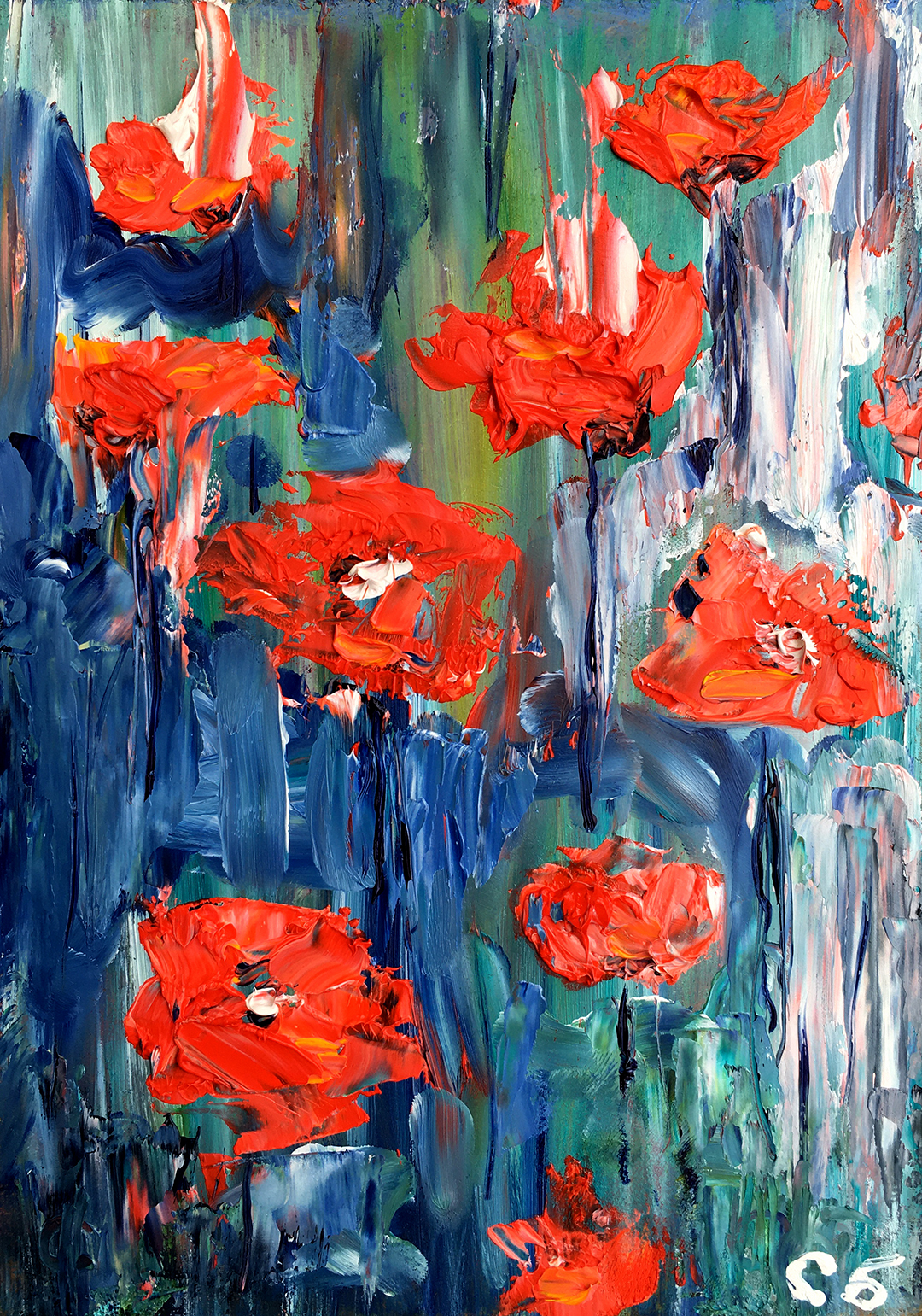
Notable Artists and Their Works in Poppy Painting
The allure of poppies has inspired numerous accomplished artists to create captivating works that showcase the beauty and symbolic depth of these blossoms. From renowned masters of the past to contemporary visionaries, the following section will highlight key artists and some of their notable poppy paintings.
1. Claude Monet (1840–1926):
- Water Lilies and Japanese Bridge (1899): Monet, a pioneer of the Impressionist movement, captured the delicate elegance of poppies in his iconic water lily series. His mastery of color and light evokes a sense of tranquility and natural beauty.
2. Georgia O’Keeffe (1887–1986):
- Red Poppy (1927): O’Keeffe, known for her bold and magnified floral paintings, created “Red Poppy,” an arresting piece that emphasizes the sensual and abstract qualities of the flower. Her works often transcend mere representation, inviting viewers to explore the essence of the poppy.
3. Vincent van Gogh (1853–1890):
- Irises and Poppies (1887): Van Gogh’s unique style, characterized by swirling brushstrokes and vibrant colors, is evident in his depiction of irises and poppies. The painting showcases his expressive approach to capturing the emotional intensity of nature.
4. John William Waterhouse (1849–1917):
- Gather Ye Rosebuds While Ye May (1909): Waterhouse, known for his Pre-Raphaelite style, incorporated poppies into the symbolic tapestry of this painting. The artwork, featuring a young woman surrounded by poppies, explores themes of fleeting beauty and the passage of time.
5. Anselm Kiefer (b. 1945):
- Poppy Field (1996): Kiefer, a contemporary artist, incorporates poppies into his profound and often monumental works. “Poppy Field” is a powerful piece that explores themes of memory and history, with the poppies acting as poignant symbols.
6. Shirley Novak (b. 1951):
- Poppies in the Sun (2014): Novak, a contemporary artist celebrated for her vibrant floral paintings, captures the essence of poppies in “Poppies in the Sun.” Her use of color and composition reflects a modern interpretation of this timeless subject.
In this section, we will delve into the contributions of these influential artists, examining the nuances of their styles and the ways in which they have portrayed poppies in their masterpieces. Each artist brings a unique perspective to poppy painting, contributing to the rich tapestry of this enduring artistic tradition.

Palette and Colors in Poppy Painting
The palette and colors used in poppy painting play a crucial role in conveying the essence and emotional impact of these vibrant blooms. Artists carefully select and manipulate colors to evoke specific moods, capture the ephemeral nature of poppies, and infuse their works with symbolism. In this section, we will explore the diverse palette and color choices employed in poppy painting.
1. Red Spectrum:
- The quintessential color of poppies, red symbolizes passion, life, and remembrance. Artists may vary the shades of red to convey different emotional tones, from the fiery intensity of scarlet to the softer hues reminiscent of a gentle sunset.
2. Green and Gold Accents:
- Poppies are often set against a backdrop of lush greenery, symbolizing growth and vitality. The inclusion of gold or warm yellows can enhance the visual appeal, creating a harmonious contrast and adding a touch of radiance to the composition.
3. Earth Tones:
- Artists may incorporate earthy tones such as browns and muted greens to ground the poppy painting and provide a sense of realism. These colors can convey a connection to the natural environment and contribute to the overall balance of the composition.
4. Blue and Purple Undertones:
- Some artists experiment with incorporating subtle blues or purples into their poppy paintings. These undertones can add depth and dimension to the petals, creating a nuanced representation of light and shadow.
5. White Highlights:
- White is strategically used to highlight the delicate edges of poppy petals, infusing the painting with a sense of translucency and capturing the play of light on the flowers. White accents contribute to the overall delicacy and refinement of the composition.
6. Symbolic Contrasts:
- Artists may employ symbolic contrasts, such as the juxtaposition of red poppies against a dark background or the integration of contrasting colors, to amplify the visual impact and convey deeper meanings associated with life, death, and rebirth.
7. Seasonal Influences:
- The season in which poppies bloom can influence color choices. Springtime poppies may be depicted with fresh, vibrant colors, while autumn poppies might showcase warmer, richer tones.
In this section, we will delve into the significance of the chosen palette and colors in poppy painting, exploring how artists use these elements to tell a visual story and evoke emotional responses from viewers. The nuanced interplay of colors contributes to the timeless and evocative nature of poppy artworks.
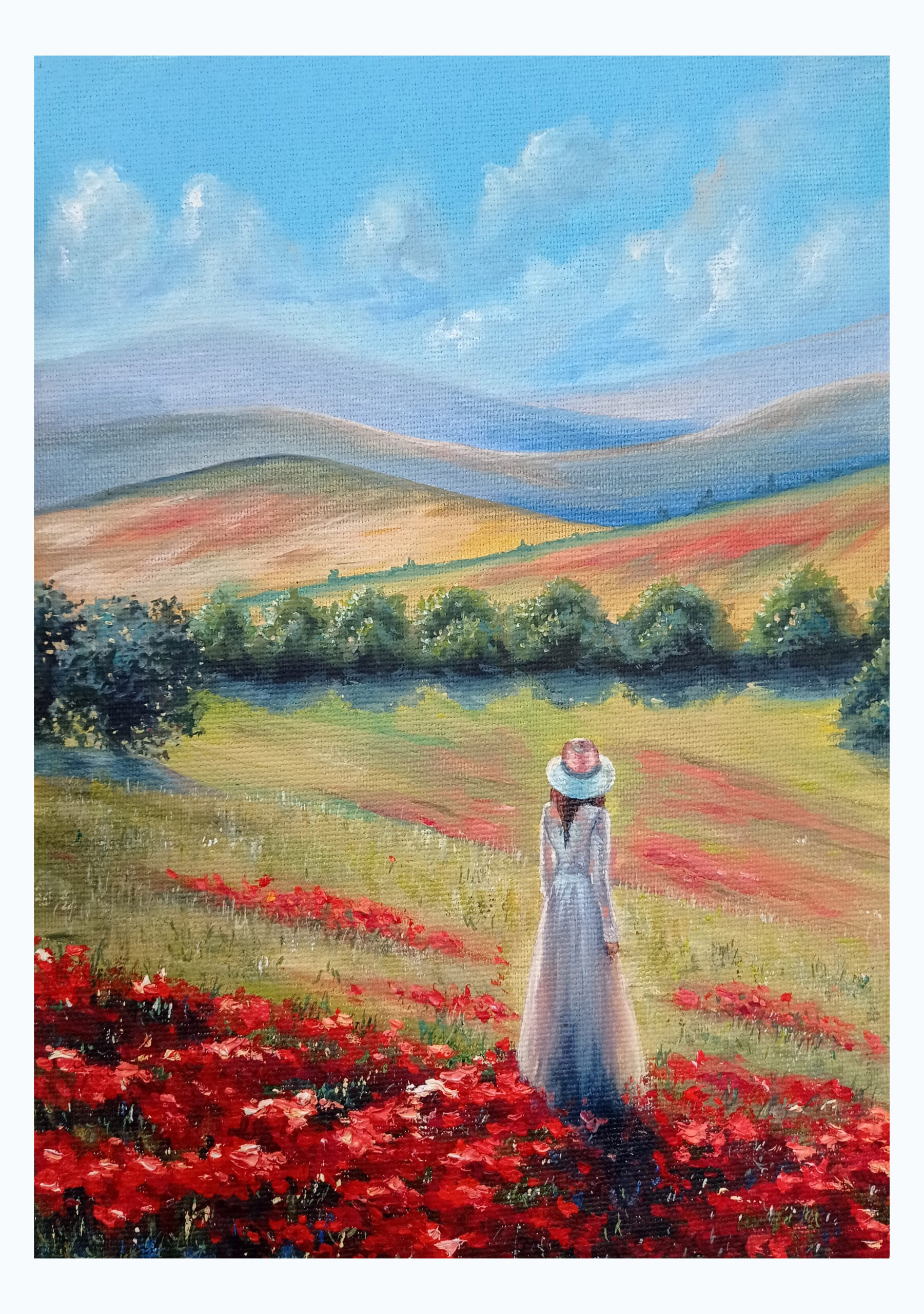
Inspiring Locations and Nature in Poppy Art
The depiction of poppies often draws inspiration from the enchanting landscapes and diverse environments where these blooms thrive. From vast meadows to intimate gardens, the settings and nature surrounding poppies contribute significantly to the visual narrative and emotional impact of poppy art.
1. Poppy Fields:
- Endless fields of poppies, with their undulating waves of vibrant color, serve as iconic and inspiring settings in poppy art. Artists often capture the sheer expanse of these fields, symbolizing abundance, beauty, and the transient nature of life.
2. Countryside Scenes:
- Rural landscapes and countryside scenes frequently feature poppies as integral components. Whether nestled among other wildflowers or standing alone against the backdrop of rolling hills, poppies in the countryside evoke a sense of simplicity, serenity, and natural beauty.
3. Garden Sanctuaries:
- Manicured gardens and carefully cultivated spaces showcase poppies as elements of cultivated beauty. Artists may use these settings to explore themes of human connection with nature, the passage of time, and the artistry involved in cultivating floral environments.
4. Coastal and Mountainous Regions:
- Poppies can be found in diverse geographical locations, from coastal cliffs to mountainous terrains. Depictions of poppies in these settings often highlight the resilience of nature, as these blooms flourish in a variety of environments, each contributing its own unique charm to the artwork.
5. Seasonal Changes:
- Artists capture the transformative nature of poppy landscapes throughout the seasons. Springtime scenes may showcase the emergence of poppies amidst fresh greenery, while autumnal depictions might emphasize the changing hues of both poppies and the surrounding foliage.
6. Symbolism of Wilderness:
- Wild and untamed landscapes symbolize the untethered and spontaneous aspects of poppies. These settings, often characterized by an unstructured profusion of blooms, inspire interpretations related to the unrestrained beauty of nature.
7. Cultural Context:
- In some instances, poppy art is influenced by the cultural significance of these blooms in specific regions. For example, the poppy fields of Flanders have become poignant symbols of remembrance and reflection.
In this section, we will explore how different settings and the broader aspects of nature inspire artists in the creation of poppy paintings. The connection between poppies and their environments contributes to the multifaceted symbolism and emotional resonance found in these captivating works of art.
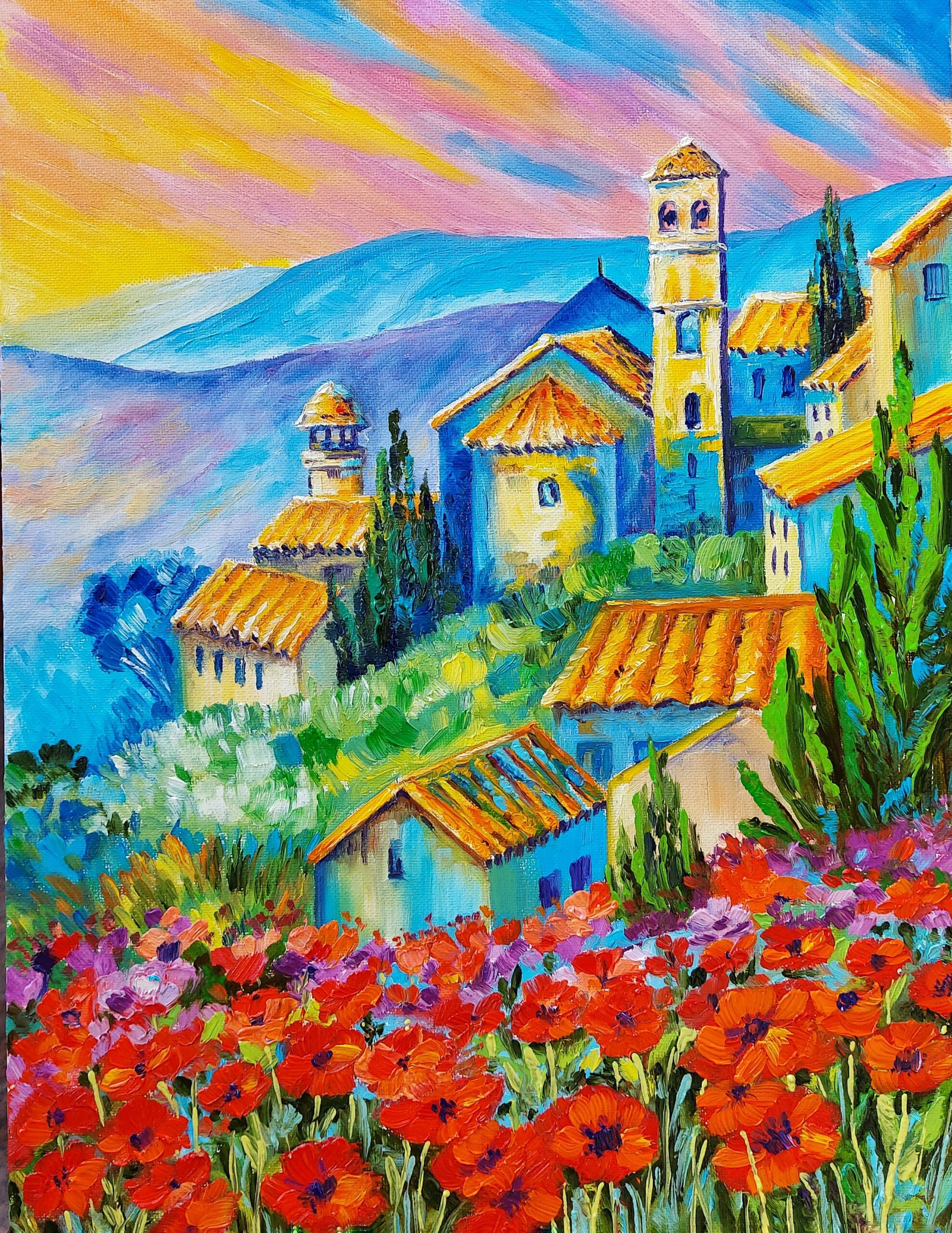
Instructions for Creating Your Own Poppy Painting
Embarking on the journey of creating a poppy painting can be a rewarding and expressive experience. Whether you’re a seasoned artist or a beginner, the following step-by-step guide will help you bring the beauty of poppies to life on your canvas.
1. Gather Your Materials:
- Acquire the necessary materials, including canvas, brushes, acrylic or oil paints, palette, and a water cup. Consider the size and shape of your canvas based on your artistic vision.
2. Find Inspiration:
- Explore poppy paintings by other artists for inspiration. Consider the colors, styles, and settings that resonate with you. This can help you define the mood and composition of your own artwork.
3. Sketch Your Composition:
- Begin with a light pencil sketch on the canvas to outline the composition. Determine the placement of poppies, the overall structure, and any additional elements such as background scenery.
4. Choose Your Color Palette:
- Select a color palette that aligns with the mood you want to convey. Consider the season, setting, and emotional tone of your painting. Experiment with variations of reds, greens, and complementary colors.
5. Block in Background and Foreground:
- Start by blocking in the background and foreground areas. This provides a foundation for the rest of the painting. Consider whether you want a simple background or a detailed landscape.
6. Paint the Poppies:
- Begin painting the poppies. Start with the base color for the petals and gradually add details. Consider the direction of light and shadow to create depth and realism. Experiment with brushstrokes to capture the delicate texture of the petals.
7. Layering and Texture:
- Use layering techniques to add depth to your painting. Allow layers to dry between applications. Consider adding texture to the petals using techniques like stippling or impasto for a more tactile effect.
8. Define Details:
- Pay attention to the details of the poppies, such as the centers, stamens, and the subtle variations in color. Define the edges of the petals and add any intricate features that contribute to the overall realism of the flowers.
9. Background Elements:
- If your composition includes a background, paint in additional elements such as leaves, stems, or other flowers. Ensure a balanced composition that complements the focal point of the poppies.
10. Final Touches:
- Step back and assess your painting. Make any necessary adjustments, refine details, and add final touches. Consider whether your poppy painting conveys the desired mood and emotion.
11. Let it Dry:
- Allow your painting to dry completely before considering any varnishing or protective finishes. This ensures the longevity and preservation of your artwork.
Creating a poppy painting is a personal and artistic endeavor, and these steps serve as a guide to help you navigate the process. Enjoy the creative journey and let the beauty of poppies inspire your unique masterpiece.
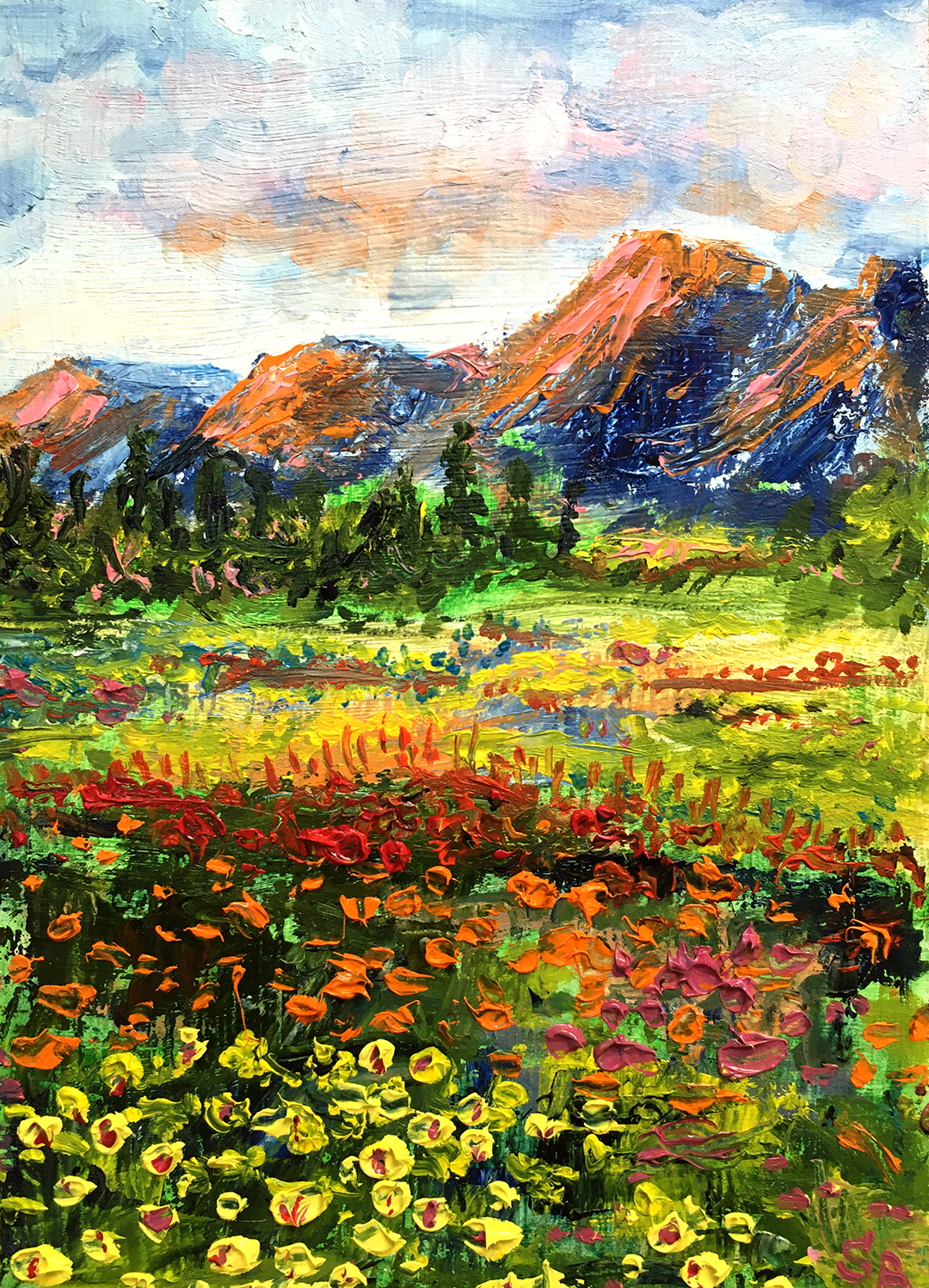
Conclusion
In the captivating world of poppy painting, artists have masterfully woven the vibrant hues and symbolic depth of these blossoms into timeless works of art. From the Impressionist brushstrokes of Monet to the bold abstractions of contemporary creators, the allure of poppies continues to inspire a diverse array of expressions.
As we conclude our exploration, it is evident that poppy painting transcends mere representation. It is a celebration of nature’s fleeting beauty, a reflection on the cycles of life and renewal, and a poignant homage to memory and resilience. The rich history, diverse techniques, and inspiring landscapes associated with poppies have contributed to the enduring appeal of this artistic genre.
Whether creating your own poppy masterpiece or appreciating the works of renowned artists, the beauty and symbolism of these blooms invite us to pause, reflect, and connect with the profound narratives woven into each petal. As we continue to explore and interpret the world of poppy painting, let us celebrate the timeless elegance and emotional resonance that these enchanting flowers bring to the canvas.
In the realm of art, as in nature, the poppy stands as a testament to the boundless possibilities of creativity and the enduring power of visual storytelling. May the journey through the world of poppy painting inspire and awaken the artist within each of us, encouraging a deeper appreciation for the beauty that surrounds us and the stories waiting to be told on the canvas.
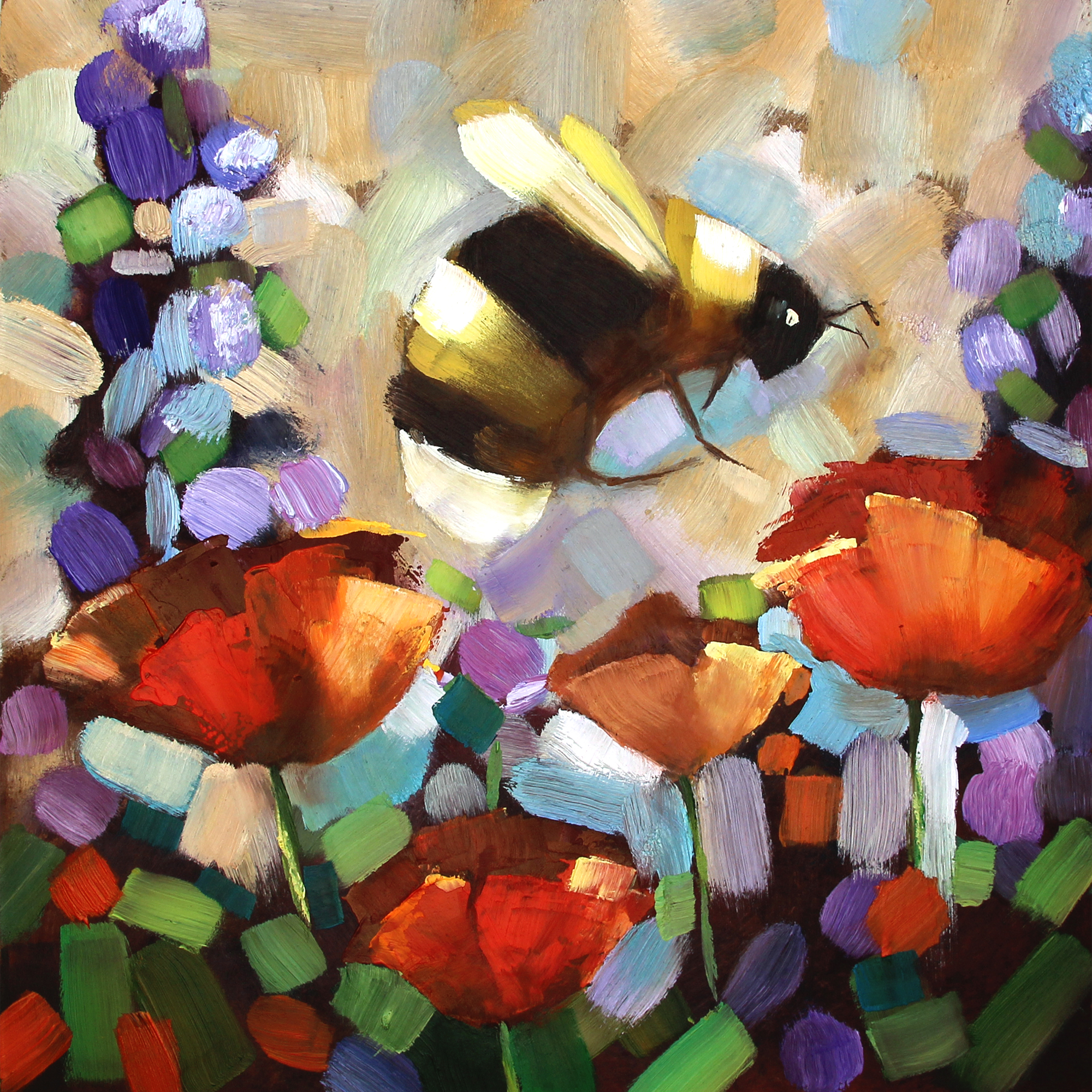
Resources and References
For those seeking further exploration into the world of poppy painting, a variety of resources and references are available. These materials provide valuable insights, tutorials, and inspiration for artists and enthusiasts alike.
1. Online Art Communities:
- Explore online platforms such as DeviantArt, Instagram, and Pinterest, where artists share their poppy paintings. Engage with the artistic community, discover new techniques, and find inspiration from a global network of creatives.
2. Art Books and Publications:
- Delve into art books and publications dedicated to floral and botanical art. Titles such as “The Art of Flowers” and “Botanical Painting with Coloured Pencils” often feature sections on poppy painting, offering in-depth insights and step-by-step guides.
3. Art Supply Retailers:
- Visit reputable art supply retailers both online and in-store to explore a wide range of materials suitable for poppy painting. Acrylic and oil paints, quality brushes, and textured canvases are essential tools to bring your poppy masterpiece to life.
4. Online Art Courses:
- Enroll in online art courses offered by platforms like Skillshare, Udemy, or Coursera. Many experienced artists provide comprehensive courses on poppy painting, covering techniques, styles, and practical tips for both beginners and advanced learners.
5. Art Galleries and Museums:
- Explore local art galleries and museums featuring exhibitions dedicated to floral and botanical art. Attend gallery openings, artist talks, and workshops to gain a deeper understanding of the diverse approaches to poppy painting.
6. Art Journals and Magazines:
- Subscribe to art journals and magazines that focus on botanical and floral art. These publications often feature articles, interviews, and showcases of contemporary poppy painters, offering a glimpse into the evolving trends in this genre.
7. Online Forums and Discussion Boards:
- Join online forums and discussion boards dedicated to art and painting. Platforms like WetCanvas or Artists Network provide spaces for artists to share experiences, seek advice, and discuss various aspects of poppy painting.
8. Local Art Classes and Workshops:
- Check local art schools, community centers, and studios for in-person art classes and workshops. Participating in live sessions provides hands-on guidance and an opportunity to connect with fellow artists.
9. Art Blogs and Tutorials:
- Follow art blogs and online tutorials that focus on poppy painting techniques. Many artists share their processes, tips, and personal experiences, creating a valuable resource for those looking to enhance their skills.
Remember to explore a variety of resources to tailor your learning experience and discover the approaches that resonate most with your artistic vision. The world of poppy painting is rich and diverse, offering endless opportunities for creative exploration.